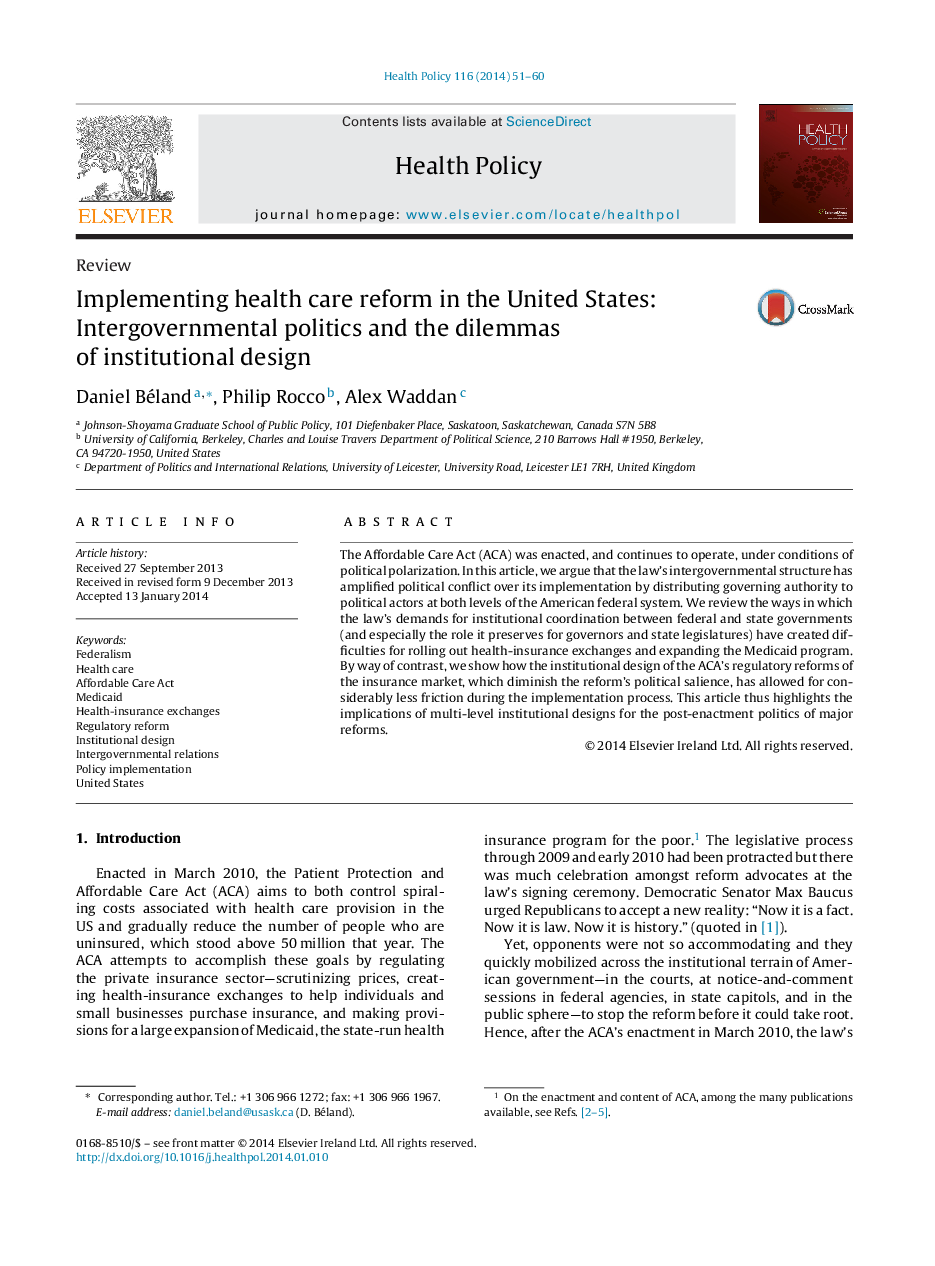| Article ID | Journal | Published Year | Pages | File Type |
|---|---|---|---|---|
| 4197809 | Health Policy | 2014 | 10 Pages |
The Affordable Care Act (ACA) was enacted, and continues to operate, under conditions of political polarization. In this article, we argue that the law's intergovernmental structure has amplified political conflict over its implementation by distributing governing authority to political actors at both levels of the American federal system. We review the ways in which the law's demands for institutional coordination between federal and state governments (and especially the role it preserves for governors and state legislatures) have created difficulties for rolling out health-insurance exchanges and expanding the Medicaid program. By way of contrast, we show how the institutional design of the ACA's regulatory reforms of the insurance market, which diminish the reform's political salience, has allowed for considerably less friction during the implementation process. This article thus highlights the implications of multi-level institutional designs for the post-enactment politics of major reforms.
